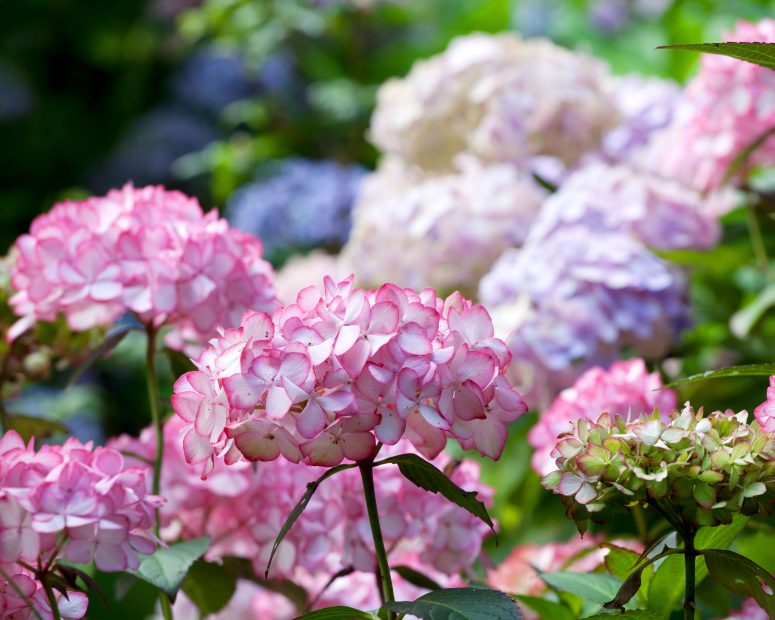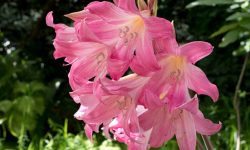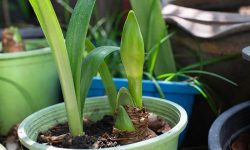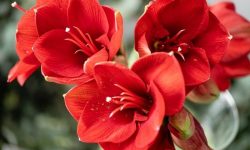Hydrangeas are among the most beloved garden plants due to their lush foliage and showy blooms. Their large, colorful flowers bring beauty to any landscape, making them a favorite for gardeners seeking long-lasting seasonal color. Understanding how long hydrangeas bloom is key to planning care routines, ensuring vibrant flowers, and maximizing their visual impact throughout the growing season. Different hydrangea varieties and environmental conditions influence bloom duration, making tailored care essential for achieving the best results.
From proper pruning and fertilization to selecting the right planting location and monitoring soil conditions, every detail plays a role in prolonging the flowering period. By learning the factors that affect bloom longevity and adopting expert care strategies, gardeners can enjoy hydrangeas that not only thrive but also deliver consistent, breathtaking blooms year after year. This guide provides comprehensive tips for maximizing hydrangea flowering potential.
Understanding Hydrangea Bloom Cycles

Hydrangeas are celebrated for their large, vibrant blooms, but understanding their flowering cycle is essential to maximize bloom duration. Different species of hydrangeas have varying bloom periods. Bigleaf hydrangeas typically bloom from late spring to early summer, while panicle and smooth hydrangeas can bloom from mid-summer through fall. Knowing the natural bloom cycle helps gardeners plan care routines, such as pruning and fertilization, to encourage longer flowering periods. Environmental conditions, like temperature, sunlight, and soil quality, also influence bloom length and overall plant health.
Bloom cycles are affected by both plant age and pruning practices. Younger hydrangeas may produce fewer flowers initially but can develop more prolific blooms as they mature. Pruning at the wrong time can reduce flower production, especially for varieties that bloom on old wood. Hydrangeas that bloom on new wood offer more flexibility for pruning, allowing gardeners to shape plants without sacrificing flowers. Recognizing the type of hydrangea you own is critical to adjusting care practices to optimize the bloom window.
Environmental stressors, such as extreme heat, drought, or nutrient deficiency, can shorten the flowering period. Proper watering, mulching, and soil management can mitigate these effects. Fertilization with a balanced formula at the right time supports strong flower development and prolongs the display. Monitoring the plant for pests and diseases also ensures that blooms are not compromised. By understanding hydrangea bloom cycles, gardeners can implement targeted care strategies to enjoy vibrant, long-lasting flowers throughout the season.
Factors Affecting How Long Hydrangeas Bloom
Variety and Blooming Type
The type of hydrangea you plant greatly affects how long blooms last. Bigleaf hydrangeas, known for their striking, colorful flowers, typically bloom from late spring to early summer. Panicle and smooth hydrangeas, however, often bloom from mid-summer through fall, providing a longer display of color. Understanding the bloom type helps gardeners plan key care practices, including pruning, fertilization, and watering schedules. Blooming on old wood versus new wood also impacts flower longevity. Bigleaf varieties bloom on last year’s wood, so pruning at the wrong time can remove next season’s flower buds, reducing the overall bloom period.
Mature plants generally produce more abundant and longer-lasting flowers compared to young hydrangeas. Younger plants may need a season or two to reach their full flowering potential. Selecting the right variety suited to local climate conditions allows gardeners to maximize bloom duration. Gardeners can manipulate bloom timing and length by choosing plants with extended flowering cycles. Combining knowledge of hydrangea types with proper care practices ensures vibrant, consistent, and prolonged blooms, creating an appealing garden display throughout the growing season.
Environmental Conditions
Environmental factors play a crucial role in determining how long hydrangeas bloom. Sunlight, temperature, and soil conditions all directly affect flower development and longevity. Hydrangeas thrive in partial sun with protection from harsh afternoon rays. Excessive sun can cause leaves to wilt and flowers to fade prematurely, while insufficient light can delay bloom and reduce flower size. Soil fertility, drainage, and pH also impact bloom quality. Well-drained soil rich in organic matter supports robust root development and longer flowering periods.
Proper watering and nutrient management are essential for maximizing bloom duration. Consistent moisture allows flowers to remain vibrant, while drought stress shortens the flowering period. Mulching helps retain soil moisture, regulate temperature, and protect roots from extreme conditions. Fertilizing with a balanced formula encourages healthy foliage and strong flower production. By optimizing environmental conditions, including light, soil, and water, gardeners can significantly extend the flowering period. Healthy plants respond with vibrant, prolonged blooms, enhancing the beauty and visual impact of the garden all season long.
Pruning Techniques to Extend Bloom
Pruning hydrangeas correctly is essential for maximizing bloom duration. Different varieties require distinct pruning approaches depending on whether they flower on old or new wood. Bigleaf and oakleaf hydrangeas bloom on last year’s wood, so heavy pruning should be avoided in late winter or early spring. Light trimming of dead or damaged stems is recommended to maintain plant health without sacrificing next season’s flowers. Proper pruning improves airflow and sunlight penetration, which encourages healthier growth and more vibrant blooms.
Panicle and smooth hydrangeas bloom on new wood, offering more flexibility for pruning. Cutting back up to one-third of the plant during late winter or early spring encourages the development of strong, vigorous shoots. These shoots produce larger and longer-lasting flowers. Using clean, sharp tools prevents damage to stems and reduces the risk of disease. Timing is critical; pruning too late in the season can remove flower buds and shorten the bloom period. Consistent pruning each year ensures that plants remain well-shaped, healthy, and capable of producing abundant flowers.
Beyond structural pruning, deadheading spent blooms also extends flowering. Removing faded flowers redirects the plant’s energy into producing new blooms and maintaining overall vigor. Combining proper pruning techniques with adequate watering, mulching, and fertilization enhances the plant’s ability to sustain longer blooms. Gardeners who follow these practices will enjoy hydrangeas that adapt well to seasonal changes and display lush, vibrant flowers for an extended period, creating a visually stunning and resilient garden throughout the growing season.
Fertilization Tips for Longer Blooming
Proper fertilization is crucial for encouraging hydrangeas to bloom fully and extend their flowering period. Hydrangeas require a balanced mix of nitrogen, phosphorus, and potassium to support healthy foliage, strong stems, and vibrant flowers. Applying fertilizer at the right time ensures that nutrients are available during critical growth stages. Early spring fertilization promotes new shoot development, while additional applications during the growing season sustain flower production and extend bloom duration. Timing is essential, as too early or too late feeding can reduce the overall flowering performance and plant health.
The type of fertilizer also greatly affects bloom longevity. Slow-release granular fertilizers provide steady nutrients over time, reducing the risk of over-fertilization and ensuring consistent growth. Liquid fertilizers offer a quick boost, particularly if applied during the peak blooming season. Avoid high-nitrogen fertilizers late in the season, as excessive nitrogen can promote leafy growth at the expense of flowers. Combining slow-release and liquid fertilizers allows gardeners to maintain continuous nutrient availability, supporting prolonged flower development and overall plant vigor.
Additional considerations include soil pH, organic amendments, and proper application methods. Acidic soil enhances blue hues in bigleaf hydrangeas, while alkaline soil encourages pink blooms. Incorporating compost or well-rotted manure enriches the soil, improves drainage, and provides essential micronutrients for strong flower formation. Regularly monitoring plant response allows gardeners to adjust fertilization schedules and quantities. By integrating proper fertilization techniques with consistent watering, pruning, and soil management, gardeners can enjoy hydrangeas with longer-lasting, more vibrant blooms, enhancing garden beauty and ensuring a visually stunning display throughout the entire growing season.
Watering Strategies to Support Extended Blooming
Consistent and proper watering is vital for hydrangeas to maintain vibrant blooms throughout the season. Hydrangeas prefer evenly moist soil, as drought stress can cause flowers to fade quickly and leaves to wilt. Deep watering encourages strong root growth, which supports prolonged flowering. Shallow, frequent watering should be avoided, as it promotes weak roots and shortens the bloom period. Monitoring soil moisture daily ensures plants receive sufficient hydration without waterlogging the soil.
Mulching complements watering strategies by conserving moisture and regulating soil temperature. Organic mulches, such as shredded bark, pine needles, or compost, help reduce evaporation and maintain stable root conditions. Applying a 2–4 inch layer around the base, while keeping mulch away from the stems, protects roots from extreme heat or cold. Consistent moisture retention provided by mulching ensures hydrangeas can sustain longer blooms and reduces stress that often leads to premature flower drop.
Timing of watering also impacts flower longevity. Morning irrigation is ideal, allowing water to reach roots before the heat of the day and reducing fungal disease risk. Avoid watering late in the evening, as prolonged leaf wetness can encourage mildew and other fungal problems. Adjust watering frequency based on seasonal rainfall and temperature fluctuations. By combining deep, consistent watering with proper mulching and timing, gardeners can support hydrangeas in producing longer-lasting, vibrant blooms and maintain healthy, resilient plants throughout the growing season.
Mulching and Soil Care for Longer Blooming
Mulching Techniques for Hydrangeas
Mulching is essential to maintain soil moisture and extend hydrangea bloom duration. Applying a 2–4 inch layer of organic mulch, such as shredded bark, pine needles, straw, or compost, helps regulate soil temperature and reduce evaporation. Keeping mulch a few inches away from the plant’s base prevents stem rot and other fungal issues. Mulching also suppresses weeds, which compete with hydrangeas for nutrients and water, allowing the plant to focus energy on flower production.
Mulch not only preserves moisture but gradually enriches the soil. As organic material decomposes, it adds nutrients and improves soil structure, promoting stronger roots and healthier foliage. This slow-release nutrient contribution supports longer-lasting, vibrant blooms throughout the growing season. Replenishing mulch annually ensures ongoing protection against temperature extremes and moisture loss. Consistent mulching, combined with proper watering and careful pruning, allows hydrangeas to thrive in a variety of climates and maintain peak flowering for extended periods, enhancing the overall beauty and longevity of garden displays.
Soil Care and Amendments
Healthy, well-drained soil is critical for hydrangea bloom longevity. Hydrangeas prefer slightly acidic to neutral soil, rich in organic matter. Testing soil pH allows gardeners to make precise adjustments, such as adding sulfur to lower pH for blue blooms or lime to raise pH for pink blooms. Maintaining proper pH supports nutrient uptake and vibrant flower coloration. Adequate soil fertility encourages robust foliage and prolonged flower production.
Amending soil with compost, well-rotted manure, or leaf mold improves texture, drainage, and nutrient availability, fostering healthy root systems. Avoid compacted or overly sandy soils, as they can stress plants and shorten bloom duration. Regularly monitoring soil health, adjusting amendments as needed, and incorporating organic matter annually ensures optimal growth conditions. Combined with consistent watering and mulching, attentive soil care allows hydrangeas to develop strong roots, resist environmental stress, and produce longer-lasting, colorful blooms that enhance overall garden aesthetics and visual impact throughout the season.
Pest and Disease Management for Longer Blooming
Common Pests and Their Control
Hydrangeas are susceptible to a variety of pests that can reduce bloom quality and duration. Aphids, spider mites, scale insects, and thrips frequently attack leaves, stems, and flower buds. These pests drain nutrients, distort foliage, and cause flowers to fade prematurely. Early detection is essential. Gardeners should inspect leaves regularly, especially the undersides, and remove pests manually or with a gentle spray of water.
For more persistent infestations, insecticidal soaps or horticultural oils can be applied, following label instructions carefully. Introducing beneficial insects, such as ladybugs, lacewings, or predatory mites, helps naturally control pest populations without harmful chemicals. Maintaining plant health through proper watering, mulching, and timely pruning reduces vulnerability to pest attacks. Stress-free hydrangeas resist infestations better and continue producing long-lasting blooms. Combining proactive monitoring, preventive care, and prompt treatment ensures hydrangeas remain vibrant. Gardeners who follow these methods can protect flowers, enhance plant vigor, and enjoy extended, colorful displays throughout the growing season, creating a resilient and thriving garden.
Disease Prevention and Management
Fungal and bacterial diseases can significantly shorten the hydrangea flowering period. Common issues include powdery mildew, leaf spot, botrytis blight, and root rot. These diseases often arise from poor airflow, excessive moisture, or contaminated soil. Regularly removing fallen leaves, spent blooms, and debris helps prevent pathogen buildup. Avoid overhead watering to keep foliage dry and reduce fungal infection risk.
Selecting disease-resistant varieties improves bloom longevity. Fungicides may be applied at the first signs of infection, always following label instructions. Proper plant spacing ensures airflow between stems, reducing humidity and limiting disease spread. Maintaining strong hydrangeas through correct mulching, soil amendments, and pruning supports resistance to infections. Early detection and swift intervention prevent minor issues from escalating. By implementing these practices consistently, gardeners can protect hydrangeas from disease, maintain healthy foliage, and enjoy longer-lasting, vibrant blooms. These strategies ensure that hydrangeas flourish and display stunning flowers throughout the season.
Seasonal Care Tips for Extended Bloom
Spring Care for Hydrangeas
Spring is a critical period to prepare hydrangeas for maximum blooming. Begin by removing any dead, damaged, or weak stems accumulated during winter. Light pruning encourages new growth while preserving flower buds on old-wood varieties. Applying a balanced, slow-release fertilizer in early spring supports healthy shoots, strong stems, and robust root development. Gardeners should also loosen soil around the base to improve aeration and nutrient absorption. Early spring is the ideal time to plant new hydrangeas or transplant existing ones, giving them a full growing season to establish roots.
Spring is also ideal for checking soil pH and making adjustments to influence bloom color. Acidic soil promotes blue flowers, while alkaline soil encourages pink blooms. Consistent watering during early growth prevents stress and supports proper flower formation. Mulching around the base helps regulate soil temperature, retain moisture, and suppress weeds. Applying organic mulch such as compost or pine needles gradually enriches the soil. Preparing hydrangeas thoroughly in spring sets the foundation for vibrant, long-lasting blooms. Gardeners who pay attention to these details ensure healthy plants and a spectacular display throughout the growing season.
Summer Care for Hydrangeas
During summer, hydrangeas require careful attention to maintain bloom quality. Deep, consistent watering is essential, especially during hot, dry spells, as drought stress can shorten bloom duration. Mulching continues to conserve moisture, regulate soil temperature, and protect roots from heat extremes. Avoid letting soil dry completely, as this can lead to flower wilting and leaf browning. Summer heat can also trigger leaf scorch, so providing partial shade in the afternoon helps protect sensitive varieties.
Summer is also the peak period for pest and disease monitoring. Aphids, spider mites, and fungal issues can appear rapidly in warm, humid conditions. Treat problems promptly using organic or chemical methods according to label instructions. Deadheading spent blooms during summer directs energy toward new flower production and helps prolong the flowering period. Providing balanced fertilization and monitoring for nutrient deficiencies also enhances bloom longevity. Proper summer care maintains lush foliage, encourages continuous flowering, and keeps hydrangeas vibrant throughout late summer and early fall.
Fall Care for Hydrangeas
Fall care focuses on preparing hydrangeas for dormancy while maintaining flower potential for the following year. Gradually reduce watering as growth slows, but avoid letting soil dry out completely. Continue inspecting plants for pests or disease, and remove fallen leaves to prevent fungal growth and insect harboring. Fertilizing with a low-nitrogen formula helps strengthen roots and reduces late-season vegetative growth that is vulnerable to winter damage.
Light pruning is appropriate for panicle and smooth hydrangeas, shaping them for next season’s blooms. Bigleaf and oakleaf varieties should be pruned minimally to protect flower buds. Applying organic mulch insulates roots against cold temperatures and provides slow-release nutrients. Checking structural support, staking heavy stems, and removing damaged branches ensures plants survive winter intact. Fall care also includes protecting shallow roots by adding extra mulch or using frost blankets in colder regions. Proper fall maintenance ensures hydrangeas enter winter healthy, ready to bloom abundantly in spring.
Winter Care for Hydrangeas
Winter care is essential to protect hydrangeas from frost and ensure spring flowering. In colder regions, wrap susceptible plants with burlap or apply extra mulch around the base to shield roots and lower stems. Avoid heavy pruning, which may remove buds on old-wood varieties and reduce next season’s blooms. Container-grown hydrangeas should be moved indoors or to a protected area where temperatures remain above freezing. Adding a thick layer of straw, shredded leaves, or bark around the root zone helps insulate the plant and prevents soil from freezing too quickly.
Monitor snow and ice accumulation on branches to avoid breakage, gently removing excess snow using a broom or gloved hands. Protecting plants during winter reduces stress and preserves flower buds, ensuring vigorous growth and abundant blooms in spring. Winter is also an ideal time to plan for soil amendments, such as compost or slow-release fertilizers, for the upcoming season. Checking plant supports and staking weak branches before heavy snow ensures structural stability. Proper winter care maintains overall plant resilience, promotes long-lasting, vibrant flowers, and prepares hydrangeas for consistent bloom production year after year, creating a visually stunning and healthy garden.
FAQ About How Long Hydrangeas Bloom
How long do hydrangeas typically bloom?
Hydrangeas generally bloom for six to eight weeks, depending on variety, climate, and care practices. Panicle and smooth hydrangeas can bloom longer, sometimes up to three months. Proper watering, fertilization, mulching, and sunlight exposure help extend the flowering period, while minimizing stress from pests and extreme weather ensures vibrant, long-lasting blooms.
Can pruning affect bloom time?
Yes, pruning directly impacts bloom timing and quantity. Old-wood hydrangeas bloom on previous year’s growth, so pruning too early can remove buds and reduce flowers. New-wood varieties bloom on current year’s stems and can be pruned in late winter or early spring. Correct pruning encourages stronger stems and more abundant blooms.
How does soil pH affect hydrangea flowers?
Soil pH influences flower color, especially in bigleaf hydrangeas. Acidic soil with a pH below 6 produces blue blooms, while alkaline soil above 7 encourages pink flowers. Gradual adjustments using sulfur or lime maintain plant health. Regular testing ensures the desired color, supports nutrient absorption, and promotes vigorous growth and abundant flowering.
What watering practices extend blooms?
Deep and consistent watering supports strong roots, prevents wilting, and extends bloom life. Mulching helps retain soil moisture, regulate temperature, and reduce plant stress during hot periods. Early morning watering minimizes fungal risk. Maintaining proper soil hydration encourages healthy foliage, stronger stems, and vibrant flowers that last throughout the growing season.
How can I protect hydrangeas in winter?
Mulch around the base and wrap plants with burlap in cold regions to protect roots and stems. Move container hydrangeas indoors or to sheltered areas. Avoid heavy pruning to preserve buds. Remove snow or ice gently to prevent branch breakage. These steps minimize stress, preserve flower buds, and ensure abundant spring blooms.
Conclusion
Proper care throughout the year ensures hydrangeas produce long-lasting, vibrant blooms. By paying attention to seasonal needs, including spring pruning, summer watering, fall preparation, and winter protection, gardeners can maximize flowering potential. Healthy soil, consistent moisture, mulching, and pest management all contribute to prolonged bloom periods. Understanding factors such as sunlight, soil pH, and variety-specific requirements further supports robust growth and abundant flowers. With careful planning and attentive care, hydrangeas thrive in any garden, creating stunning visual displays that captivate the eye and provide a continuous, colorful bloom throughout the growing season.






